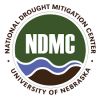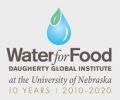Led by:

The International Water Management Institute (IWMI)
The International Water Management Institute is a non-profit, scientific research organization focusing on the sustainable use of water and land resources in developing countries. Headquartered in Colombo, Sri Lanka, with regional offices across Asia and Africa, the Institute works with governments, civil society and the private sector to develop scalable agricultural water management solutions that have a real impact on poverty reduction, food security and ecosystem health. IWMI is a CGIAR Research Center and leads the Research Program on Water, Land and Ecosystems.
Supported by:
 The United States Agency for International Development (USAID), Middle East Bureau
The United States Agency for International Development (USAID), Middle East Bureau
USAID is a U.S. Government agency primarily responsible for administering civilian foreign aid, working to end extreme global poverty and enable resilient, democratic societies to realize their potential. It leads international development and humanitarian efforts to save lives, reduce poverty, strengthen democratic governance and help people progress beyond assistance.
The Middle East Bureau of USAID operates bilateral missions in Egypt, Iraq, Jordan, Lebanon, Morocco and West Bank/Gaza, and an office in Tunisia. USAID also operates regional programs and manages development programs through partners in countries without missions, including Syria, Libya and Yemen.
In partnership with:
MENAdrought is working closely with many national and local government agencies, the private sector and civil society in each of the three countries. These are very much part of a co-creation and co-enabling environment to bring operational drought management into effect. Their input and insight is invaluable.

The Nebraska Drought Mitigation Centre
The National Drought Mitigation Center’s mission is to reduce the effects of drought on people, the environment and the economy by researching the science of drought monitoring and the practice of drought planning. This team of world-leading climatologists, remote sensing and information technology scientists, sociologists, community and regional planners and developers, geographers, analysts and communicators all strive to mitigate drought across the United States and worldwide. They collaborate with and learn from decision-makers at all levels – individual ranchers, communities, regions, watersheds, tribes, states, countries, and organize and present workshops and capacity-building activities in close cooperation with local partners.

Daugherty Water for Food Global Institute
The Daugherty Water for Food Global Institute at the University of Nebraska works to address the global challenge of achieving food security with less stress on water resources through water management in agricultural and food systems. Its wide network of faculty, students, postdoctoral researchers, partners, advisers and other stakeholders, work collaboratively to develop solutions to water and food security challenges by advancing research, policy and technological innovations.
Through research and policy development, education and communication, the institute is enhancing knowledge, fostering future water and food security leaders and developing effective techniques to sustainably manage water and increase food security.

John Hopkins University
John Hopkins University is America’s first research university, and a destination for excellent, ambitious scholars and a world leader in teaching and research. Distinguished professors mentor students in the arts and music, humanities, social and natural sciences, engineering, international studies, education, business, and the health professions. Those same faculty members, along with their colleagues at the university’s Applied Physics Laboratory, have made us the nation’s leader in federal research and development funding every year since 1979.

Nasa Goddard Space Flight Center
NASA’s Goddard Space Flight Center in Greenbelt, Maryland, is home to the nation’s largest organization of scientists, engineers and technologists who build spacecraft, instruments and new technology to study Earth, the sun, our solar system and the universe. NASA’s Goddard Space Flight Center plays a pivotal role across all aspects of the agency’s missions, from development to de-orbit. More than 50 Goddard spacecraft explore Earth and soar through the solar system, collecting observations to be parsed and studied by scientists around the world. Goddard’s missions support multiple scientific disciplines, including Earth science, solar science and the sun-Earth environment, planetary studies and astrophysics.






